The following originally appeared on Latino Rebels.
Netflix has racked up three Latin American profiles on Chef’s Table: Enrique Olvera (México), Alex Atala (Brasil) and Francis Mallmann (Argentina).
For those of you unfamiliar with the program, let me help by explaining how the program came to be.
Jiro Dreams of Sushi was a documentary film released in 2012. It was directed by David Gelb, distributed by Magnolia Pictures, and performed with $2.5 million in worldwide box office revenue. Twenty-seven mainstream media critics reviewed the film, and it scored a 77 on Metacritic.
Jiro Dreams of Sushi is the story of 85-year-old Jiro Ono, a celebrated sushi chef. He is the proprietor of Sukiyabashi Jiro, a 10-seat sushi-only restaurant located in a Tokyo subway station. Despite its humble appearances, it is the first restaurant of its kind to be awarded a prestigious three-star Michelin review, and sushi lovers from around the globe make repeated pilgrimages, calling months in advance and shelling out top dollar for a coveted seat at Jiro’s sushi bar. For most of his life, Jiro has been mastering the art of making sushi, but even at his age he sees himself still striving for perfection, working from sunrise to well beyond sunset to taste every piece of fish, meticulously training his employees, and carefully molding and finessing the impeccable presentation of each sushi creation. At the heart of this story is Jiro’s relationship with his eldest son, Yoshikazu, the worthy heir to Jiro’s legacy, who is unable to live up to his full potential in his father’s shadow.
The film was, in my opinion, an excellent work of documentary filmmaking, and it provided David Gelb with enough Hollywood clout to parlay that documentary film into a TV series documentary for Netflix called Chef’s Table. In Season 1, released in 2015, he created six hours of footage focused around six different chefs worldwide. In episode 3 of season 1, he focused on the Argentine Francis Mallmann, in episode 2 of season 2, he focused on the Brazilian Alex Atala, and in episode 4 of season 2, he focused on the Mexican Enrique Olvera.
Francis Mallmann lives isolated in Patagonia. In what I feel is the best scene of both seasons, Francis takes his boat out on an isolated lake and catches a beautiful fish. He then gathers mud from the lake and bakes the fish in the mud underground in a natural oven. This scene typifies the style of indigenous cooking that Francis aspires to showcase while being filmed for his contributions to fine dining in a French-trained career.
Similarly, Alex Atala learned to cook while studying in Europe. He spends the majority of his screen time in indigenous parts of the Brazilian Amazon being educated by indigenous peoples about natural ingredients and insects which he then modifies at D.O.M. in São Paulo for European Brazilians.
In a tiny twist, Enrique Olvera learns to cook in New York and then comes back to Mexico City to cook with indigenous ingredients like worms and ants. He adds to his repertoire the Spanish influence felt a huevo by every Mexican living in the mestizaje.
Taken together, you have three male ambassadors of Latin American cuisine showcasing similar sensibilities. Upon watching all three, I was left questioning something that is critical to the format of the show: What would happen if these chefs weren’t trained by European men and rated by European men, if they were just indigenous women who cook corn, bean and squash? Would you be as interested? What is it about the European influence on our present-day culture that continues to penetrate the cultures of the Americas in every direction of the four winds?
In September of 2015, I surveyed the food scene in Baja California. Hardly an indigenous hotbed but filled with young, talented, mostly Mexican chefs looking to make their mark on the gastronomy of a region. At the top of the pyramid is a man named Hugo D’Acosta. Some consider him the godfather of the region for all the contributions he has made to the wine region of Ensenada in general and Valle de Guadalupe specifically. Over the years, Hugo’s orbit has created five super chefs: Javier Plascencia, Benito Molina, Diego Hernandez, Drew Deckman and Miguel Ángel Guerrero. All five are chefs with a very similar profile and sensibility as Francis Mallman, Alex Atala and Enrique Olvera. So much so that if David Gelb were to come to Valle de Guadalupe, he could make an exact replica episode using the same format used on Chef’s Table.
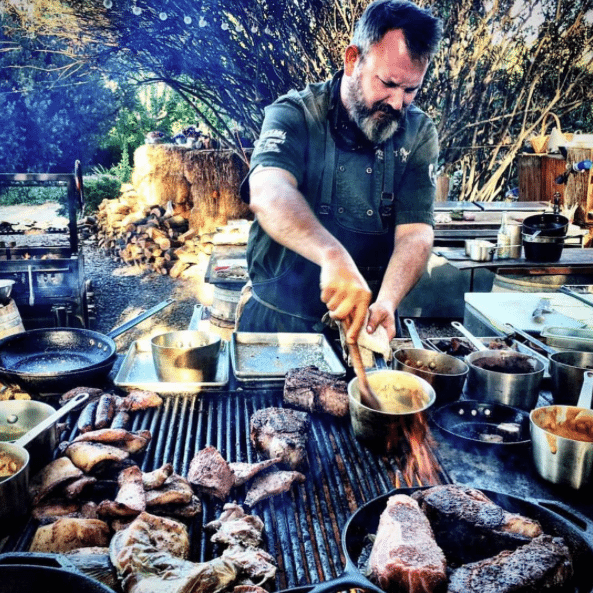
Just below the crème de la crème are an assortment of female chefs. Towards the top of the pyramid dedicated to female chefs, you have Solange Muris, Sabina Bandera and Esthela Martinez who in some way have been able to penetrate the arena where the European men and the European agencies acknowledge their contributions. All three are wonderful women balancing their personal and professional lives and preparing delicious Mexican food in three distinct styles: Solange in fine-dining, Sabina in street faire, and Esthela in home-cooking.
In the shadow of these three ladies lives a phenomenal explosion of talent, and these are the chefs that I am working with for an upcoming series called MXCNAS. Twenty-five talents in Tecate, Tijuana, Ensenada and Valle de Guadalupe. As their biographer, I am curious what might happen if I refuse to acknowledge the male chef validated by the European male critic format set by David Gelb, and I focus in on a totally different angle while featuring these women. The focus is not the country, the region, the chef, the ingredient or the prepared food — it’s the nutrition being served to the diner. To allow it to make sense for an audience, I created the diner. Her name is Pita.
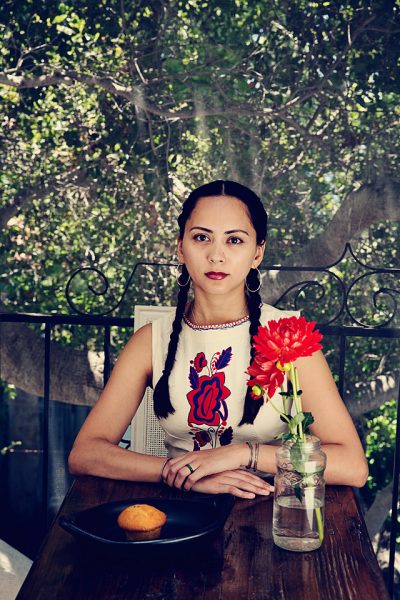
Pita is a fictional character living in Valle de Guadalupe. And the first thing that I gave her was an oxtail barquette prepared by Nancy León Álvarez of Chan’s Bistro in Tijuana.
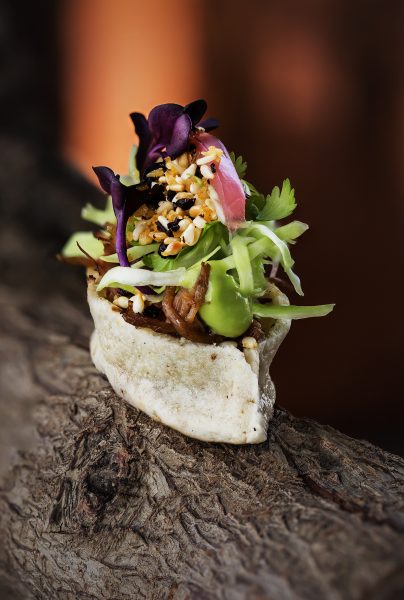
The second thing I gave her was the remix of Nancy’s dish prepared by Timothy Pakron, @MississippiVegan on Instagram.
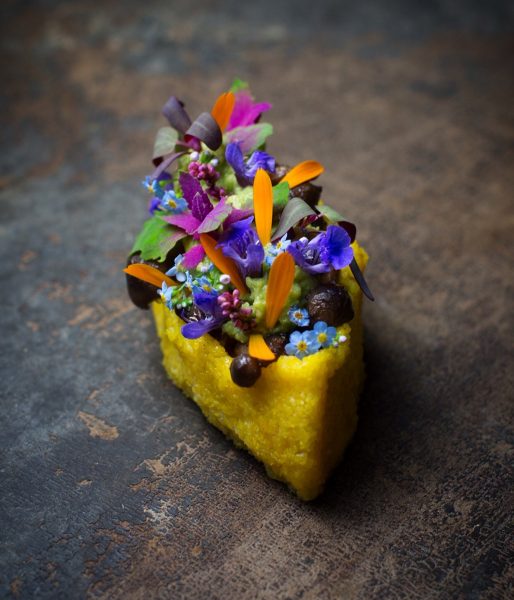
The third thing I gave her was the remix of Nancy’s dish prepared by Betty Liu, a talented blogger for le Jus d’Orange.
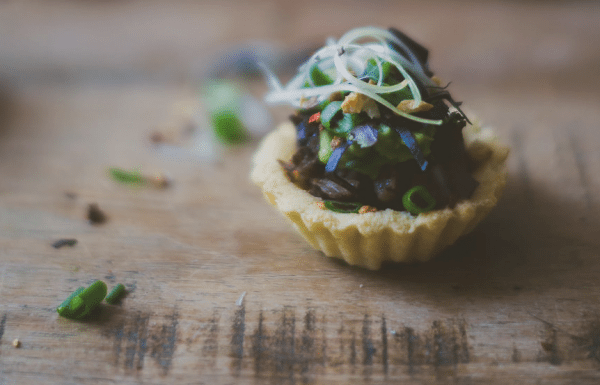
In my head, the possibilities are endless as the audience watches Pita enjoy the barquettes. How did she get to where she is and where is she going from there? To be continued.
—
Music performed by Psilosamples (Nicolá Cruz), Elza Soarez, Niju, Two Fingers, Low Leaf, Totó La Momposina, Captain Planet and Ságan. The next Intelatin episode will be released on the supermoon of July 2016.